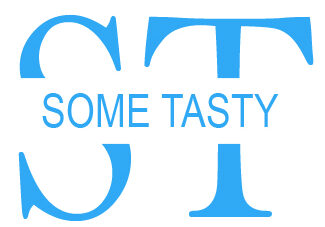Before you close this article and think I’m about to throw another fad plan or restrictive diet on you, give me a few minutes to show you a way you can eat that not only helps you lost fat fast, but does so in a way where you don’t need to ban any of your favorite foods.
As you might have guessed from earlier, we want a sustainable, healthy, tasty approach to dieting, and one that doesn’t lead to extreme hunger or binge eating.
Despite what you’ve been told about cutting carbs, banning gluten, dairy products and sugar, or even adopting a raw food approach, there is a way to get the body of your dreams with virtually no sacrifice.
(Note: I had to add ‘virtually’ in there as obviously I can’t say you won’t have to make any effort whatsoever, but I can guarantee this will be the easiest diet (with the best results) you’ve ever had.)
The way we’ll do this is by following a scientific, evidence-based method of eating.
Let’s dig into that now:
Calories: The Queen of Weight Loss
We ran through calories earlier, but let’s go even more in depth. Calories are the main factor in whether you lose or gain weight and fat.
If you eat fewer than you burn, you’ll lose weight. And if you eat more than you burn, you’ll gain weight.
Therefore, before considering anything else, you need to work out how many calories you should be consuming.
This isn’t nearly as difficult as you might have been lead to believe however.
All you need to do is take your bodyweight in pounds, and multiply it by between 10 and 12. This is known as your activity factor.
Highly active women should pick the number 12. If you train 5 or 6 times a week, then this is you. You’ll also be a 12 if you train 3 to 4 times, but have a job where you’re on your feet all day, or you’re just busy and
rushing round in general, with little time to sit down.
If you train 4 to 5 times a week, or you train 2 to 3 times and have an active lifestyle, you’ll be an 11.
For those of you who only train a couple of times every week, you’ll be a Once you’ve worked out your activity factor, you then multiply your bodyweight in pounds by it.
Got that?
We’ll run through some examples in a little while when we’ve gone through a bit more information.
9 tips for women to stay fit and healthy
Most Weight-Loss-Friendly Foods
The Power of Protein.
After calories, protein is the next critical component to suss out. The reason why protein matters so much is because it’s essential for building and maintaining muscle.
Again, while building muscle and getting bigger won’t necessarily be your aim, having a little more lean mass is such a huge help for speeding up your fat loss, and also ensures you don’t look skinny and drawn out when you diet down and lose body fat.
Protein’s second benefit is its thermogenic effect. Protein digests fairly slowly, which means that it keeps you feeling fuller for longer, and also burns extra calories during the digestion process.
Ideally, your daily protein intake should be around 1 gram per pound.
However, if you’re not used to eating a higher protein intake, then you may wish to start a little lower, at around 0.7 grams per pound.
The typical Western diet is low in protein, and so jumping straight to 1 gram per pound could be a tall order, so aim for 0.7 grams per pound, but feel free to go up to the magical 1 gram per pound mark if you’re able to.
There’s a big myth circulating that says protein will make women big and bulky, but working out where this misinformation came from is as confusing as the myth itself.
Protein on its own won’t make you bulk up, and even when combined with lifting weights, as we discussed earlier, there’s no need to worry about getting huge, purely for the fact that to get ‘bodybuilder big’ you’d need to be training specifically to look like that, as well as eating a very high calorie intake, and potentially taking performance-enhancing drugs too.
Basically … don’t worry!
You might have also heard that too much protein is bad for your liver, your kidneys, or just your general health.
Again, there’s very little in this. All the studies that have shown this to be the case have been performed in people who’ve already had issues with their organs, and actually, a slightly higher protein intake can be beneficial for bone growth, preventing osteoporosis and aiding general health, as well as muscle repair, fat burning and blunting your hunger.
Carbs and Fats: NOT the Enemy
Carbs and fats have got a bad rap recently.
If the media and magazines haven’t been demonizing one, it’s been the
other.
Thing is, you need both carbs and fats to diet effectively, lose fat quickly,
and protect your energy levels and your health.
Despite the negative name, fats have an important role, as they aid your
body with producing hormones, so you need enough fat to support this.
Carbs are your body’s main source of energy, and while you don’t want to
go overboard with your carbohydrate intake, there’s no need to go super
low either. Doing so can actually massively increase cravings and have you
feeling tired, lethargic and irritable, so keep those carbs in.
To work out how much fat and carbohydrate you need, we’ve actually got
to do some math.
But don’t worry, it’s pretty easy.
First you need to work out your calories.
Let’s say you’re moderately active and weigh 135 pounds:
135 x 11 = 1,485
Protein is at 0.7 grams per pound, so 135 x 0.7 = 94.5g (We’ll round this
to 95)
There are 4 calories per gram of protein, and 95 x 4 = 380.
This means 380 of your calories per day are going to protein.
If we take that 380 away from 1,485, you get 1,105.
This is the number of calories you should be getting per day from carbs
and fats.
How you divide this up is entirely your call, but with the method I’ll
outline for you in a moment, you’ll see that you don’t necessarily need to
decide exactly how much to have of each, provided you hit roughly the
right calorie amounts.
First up though, I wanted to show you a couple more examples:
Example 1 – Highly active woman weighing 120 pounds:
120 x 12 = 1440
Protein = 120 x 0.7 = 84
Protein calories = 84 x 4 = 336
1440 – 336 = 1,104
Calories from carbs and fat = 1,104
Example 2 – Sedentary woman weighing 175 pounds:
175 x 10 = 1750
Protein = 175 x 0.7 = 122.5 (rounded to 123)
Protein calories = 123 x 4 = 492
1750 – 492 = 1258
Calories from carbs and fat = 1,258
How to Actually Count
So far I’ve just thrown some numbers at you, which I know makes
everything super confusing, but here’s where the magic happens.
Plenty of women think that counting calories takes hours every day, or is
a massive constraint on their time, but it absolutely isn’t.
In fact, it can take as little as 2 minutes per day using an app on your
phone.
The most popular app (meaning it’s among the most user-friendly and has
the biggest database) is My Fitness Pal, so it would make sense for you to
use that, though if you’ve experimented with others and preferred those,
that’s fine too.
Now, whenever you eat something, you need to put it into My Fitness Pal.
This might sound like it takes an age, but it doesn’t.
Let’s say your breakfast was 2 poached eggs on a slice of whole-grain
toast, with ½ an avocado and a medium non-fat latte. You’d just search
for these in the app, input the amounts of the foods you had, and you’d
see a running total of your day’s calories and macronutrients (protein,
carbohydrate and fat) so far.
Clearly, by the end of the day, your goal is to hit your protein intake and
your calorie intake as you worked out above.
I’d suggest for the first few weeks, you plan your day’s eating the night
before if possible, just so you don’t get to the evening and either see that
you have loads of food to eat, or that you’ve already gone over and are
still hungry.





[…] What diet makes you lose the most weight fast? […]